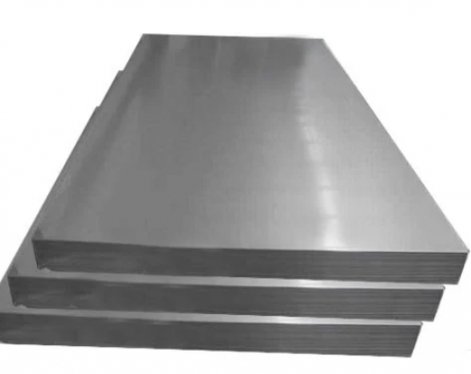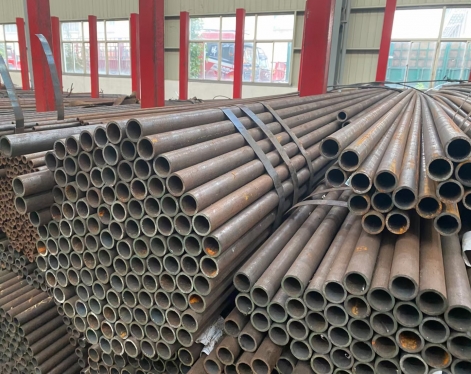Stainless steel plates are a versatile material widely used in industries ranging from construction and automotive to food processing and medical devices. Understanding both the advantages and disadvantages of stainless steel plates helps engineers, designers, and procurement specialists make informed decisions.
Advantages of stainless steel plates
1. Strong corrosion resistance: Stainless steel plates contain alloy elements such as chromium and nickel, which can form a dense passivation film on the surface, effectively preventing the erosion of oxygen, moisture and various chemical substances. In the chemical industry, many containers and pipelines for storing and transporting corrosive liquids are often made of stainless steel plates, which can operate stably for a long time and greatly reduce maintenance costs and safety risks.
2. Good strength and toughness: Its strength is better than ordinary steel, and it can withstand greater stress without deformation or fracture. At the same time, it has good toughness and can withstand a certain degree of impact. In the construction industry, stainless steel plates are often used to build structural components of bridges and high-rise buildings to ensure the stability and safety of buildings in various environments.
3. Good processing performance: It can be processed by cold processing, hot processing, welding and other methods. It can easily perform cutting, bending, stamping, deep drawing and other operations to meet the manufacturing needs of various complex shaped parts and components, such as automobile parts, kitchen equipment, etc.
4. Good heat resistance: Some stainless steel plates can maintain good mechanical properties in high temperature environments, have low thermal expansion coefficients, and are not easily deformed at high temperatures. They play an important role in the manufacture of high-temperature industrial equipment such as boilers and heating furnaces.
5. Beautiful and durable: The surface is bright, beautiful, and not easy to rust. It can maintain a good appearance after long-term use. It is often used in architectural decoration, household items and other fields, such as building curtain walls, elevator cars, etc. It is both practical and can enhance the overall aesthetics.

Disadvantages of stainless steel plates
1. Relatively heavy weight: Compared with some lightweight materials such as aluminum alloys, stainless steel plates have a higher density and are heavier. In the aerospace field, strict requirements are placed on material weight. Overweight stainless steel plates will increase the load on the aircraft, affecting flight performance and fuel efficiency, so they are rarely used.
2. The price is usually higher: Due to the addition of alloy elements such as chromium and nickel during the production process and the complex production process, its cost is higher than that of ordinary steel, resulting in a higher market price. In large-scale construction projects, if a large number of stainless steel plates are used, the construction cost will be significantly increased.
3. Some stainless steel plates may rust in certain environments: Although stainless steel plates have good corrosion resistance, in some special environments, such as high-salinity marine environments or strong acidic or alkaline environments, their passivation film may be destroyed, leading to rust. For example, if ordinary 304 stainless steel plates are used for buildings near the sea, they may develop rust spots due to long-term erosion by seawater.
4. Difficult processing: The processing of stainless steel plates requires more professional equipment and processes. Due to its high toughness, high cutting force and high cutting temperature, it is easy to form built-up edge at the tip of the tool during processing, causing damage to the blade and affecting processing efficiency and quality. For example, when cutting or precision processing stainless steel plates in complex shapes, the technical requirements for equipment and operators are very high.
Comprehensive considerations and application suggestions
Stainless steel plates have outstanding advantages, such as strong corrosion resistance, good strength and toughness, good processing performance, good heat resistance, beautiful appearance and durability. However, they also have disadvantages such as heavy weight, high price, possible rust in certain environments, and difficulty in processing.
In practical applications, its advantages and disadvantages need to be comprehensively considered according to specific scenarios. In chemical and food processing industries where corrosion resistance and strength are required and cost is not the primary consideration, stainless steel plates are an ideal choice. In aerospace and some small projects with limited budgets, the use of stainless steel plates needs to be carefully uated due to weight sensitivity or cost constraints, and other more suitable alternative materials may need to be sought.
Read more: Why does the Weld of stainless Steel Plate change Color?
Advantages of stainless steel plates
1. Strong corrosion resistance: Stainless steel plates contain alloy elements such as chromium and nickel, which can form a dense passivation film on the surface, effectively preventing the erosion of oxygen, moisture and various chemical substances. In the chemical industry, many containers and pipelines for storing and transporting corrosive liquids are often made of stainless steel plates, which can operate stably for a long time and greatly reduce maintenance costs and safety risks.
2. Good strength and toughness: Its strength is better than ordinary steel, and it can withstand greater stress without deformation or fracture. At the same time, it has good toughness and can withstand a certain degree of impact. In the construction industry, stainless steel plates are often used to build structural components of bridges and high-rise buildings to ensure the stability and safety of buildings in various environments.
3. Good processing performance: It can be processed by cold processing, hot processing, welding and other methods. It can easily perform cutting, bending, stamping, deep drawing and other operations to meet the manufacturing needs of various complex shaped parts and components, such as automobile parts, kitchen equipment, etc.
4. Good heat resistance: Some stainless steel plates can maintain good mechanical properties in high temperature environments, have low thermal expansion coefficients, and are not easily deformed at high temperatures. They play an important role in the manufacture of high-temperature industrial equipment such as boilers and heating furnaces.
5. Beautiful and durable: The surface is bright, beautiful, and not easy to rust. It can maintain a good appearance after long-term use. It is often used in architectural decoration, household items and other fields, such as building curtain walls, elevator cars, etc. It is both practical and can enhance the overall aesthetics.

Disadvantages of stainless steel plates
1. Relatively heavy weight: Compared with some lightweight materials such as aluminum alloys, stainless steel plates have a higher density and are heavier. In the aerospace field, strict requirements are placed on material weight. Overweight stainless steel plates will increase the load on the aircraft, affecting flight performance and fuel efficiency, so they are rarely used.
2. The price is usually higher: Due to the addition of alloy elements such as chromium and nickel during the production process and the complex production process, its cost is higher than that of ordinary steel, resulting in a higher market price. In large-scale construction projects, if a large number of stainless steel plates are used, the construction cost will be significantly increased.
3. Some stainless steel plates may rust in certain environments: Although stainless steel plates have good corrosion resistance, in some special environments, such as high-salinity marine environments or strong acidic or alkaline environments, their passivation film may be destroyed, leading to rust. For example, if ordinary 304 stainless steel plates are used for buildings near the sea, they may develop rust spots due to long-term erosion by seawater.
4. Difficult processing: The processing of stainless steel plates requires more professional equipment and processes. Due to its high toughness, high cutting force and high cutting temperature, it is easy to form built-up edge at the tip of the tool during processing, causing damage to the blade and affecting processing efficiency and quality. For example, when cutting or precision processing stainless steel plates in complex shapes, the technical requirements for equipment and operators are very high.
Comprehensive considerations and application suggestions
Stainless steel plates have outstanding advantages, such as strong corrosion resistance, good strength and toughness, good processing performance, good heat resistance, beautiful appearance and durability. However, they also have disadvantages such as heavy weight, high price, possible rust in certain environments, and difficulty in processing.
In practical applications, its advantages and disadvantages need to be comprehensively considered according to specific scenarios. In chemical and food processing industries where corrosion resistance and strength are required and cost is not the primary consideration, stainless steel plates are an ideal choice. In aerospace and some small projects with limited budgets, the use of stainless steel plates needs to be carefully uated due to weight sensitivity or cost constraints, and other more suitable alternative materials may need to be sought.
Read more: Why does the Weld of stainless Steel Plate change Color?









